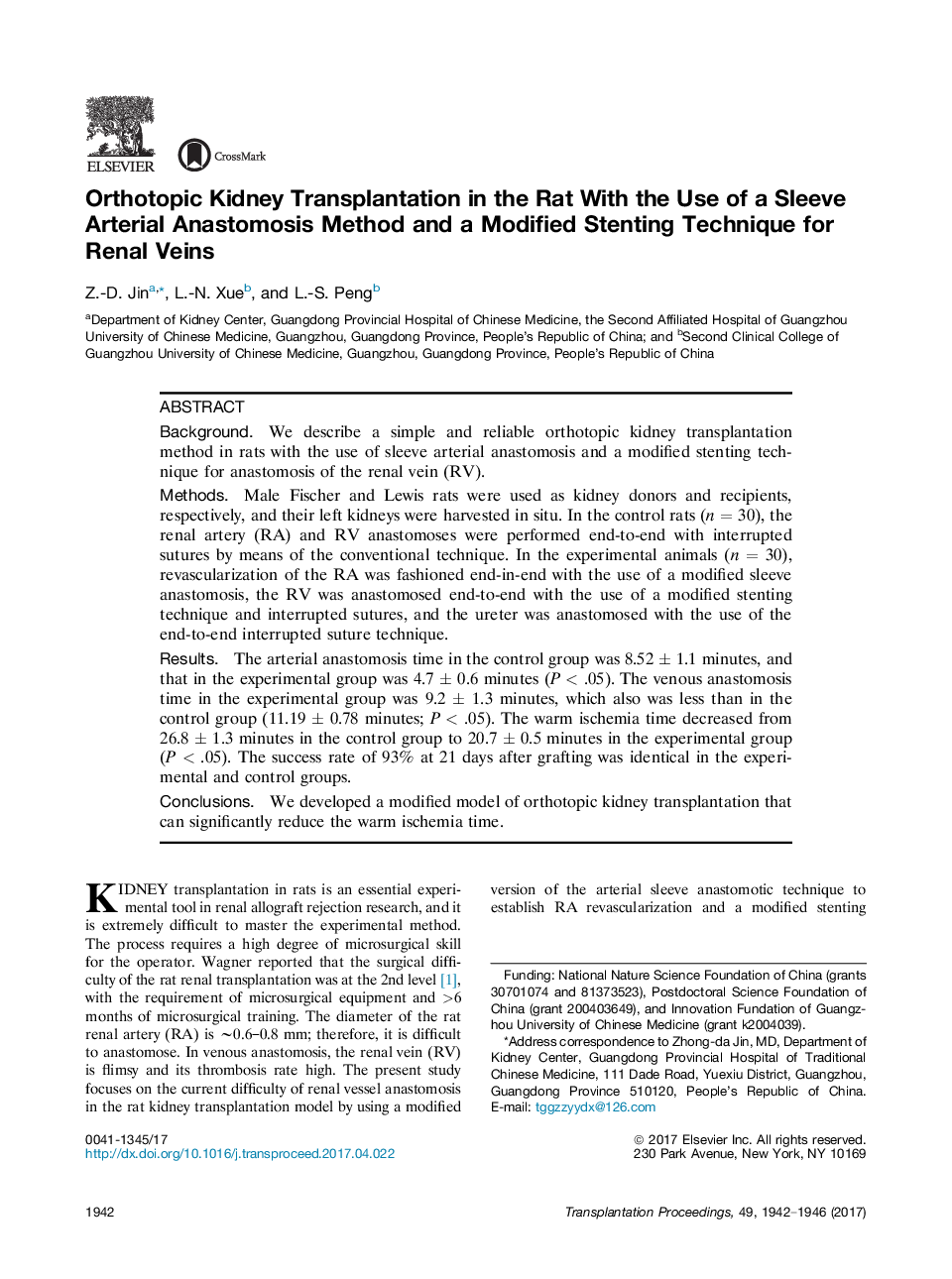| Article ID | Journal | Published Year | Pages | File Type |
|---|---|---|---|---|
| 5728657 | Transplantation Proceedings | 2017 | 5 Pages |
â¢The renal artery was anastomosed with the use of a modified sleeve technique.â¢The renal vein was anastomosed with the use of a modified stenting technique.â¢We compared our modified method with the traditional technique.â¢Our technique can significantly reduce the warm ischemia time.
BackgroundWe describe a simple and reliable orthotopic kidney transplantation method in rats with the use of sleeve arterial anastomosis and a modified stenting technique for anastomosis of the renal vein (RV).MethodsMale Fischer and Lewis rats were used as kidney donors and recipients, respectively, and their left kidneys were harvested in situ. In the control rats (n = 30), the renal artery (RA) and RV anastomoses were performed end-to-end with interrupted sutures by means of the conventional technique. In the experimental animals (n = 30), revascularization of the RA was fashioned end-in-end with the use of a modified sleeve anastomosis, the RV was anastomosed end-to-end with the use of a modified stenting technique and interrupted sutures, and the ureter was anastomosed with the use of the end-to-end interrupted suture technique.ResultsThe arterial anastomosis time in the control group was 8.52 ± 1.1 minutes, and that in the experimental group was 4.7 ± 0.6 minutes (P < .05). The venous anastomosis time in the experimental group was 9.2 ± 1.3 minutes, which also was less than in the control group (11.19 ± 0.78 minutes; P < .05). The warm ischemia time decreased from 26.8 ± 1.3 minutes in the control group to 20.7 ± 0.5 minutes in the experimental group (P < .05). The success rate of 93% at 21 days after grafting was identical in the experimental and control groups.ConclusionsWe developed a modified model of orthotopic kidney transplantation that can significantly reduce the warm ischemia time.
